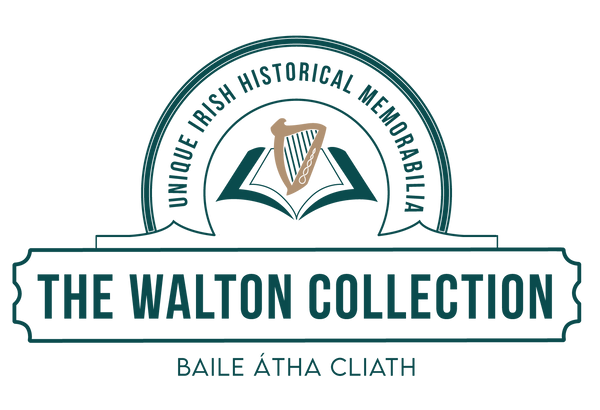The Ordnance Survey Office began mapping Ireland in 1824 at the unprecedented scale of six inches to one mile, making Ireland the first country mapped in such detail. From the original Collection, we now produce beautifully framed reproductions of the County Index maps, with options for customised local areas. Read More
-
County Clare - Townland Survey of the County of Clare (1842)
Regular price €375,00 EURRegular priceUnit price per€375,00 EURSale price €375,00 EUR -
County Cork - Townland Survey of the County of Cork (1845)
Regular price €375,00 EURRegular priceUnit price per€375,00 EURSale price €375,00 EUR -
County Donegal - Townland Survey of the County of Donegal (1838)
Regular price €375,00 EURRegular priceUnit price per€375,00 EURSale price €375,00 EUR -
County Galway - Townland Survey of the County of Galway (1841)
Regular price €375,00 EURRegular priceUnit price per€375,00 EURSale price €375,00 EUR -
County Kerry - Townland Survey of the County of Kerry (1846)
Regular price €375,00 EURRegular priceUnit price per€375,00 EURSale price €375,00 EUR -
County Kerry - Townland Survey of the County of Kerry (1846) - Enlarged canvas wall-hanging
Regular price €495,00 EURRegular priceUnit price per€495,00 EURSale price €495,00 EUR -
County Limerick - Townland Survey of the County of Limerick (1843)
Regular price €375,00 EURRegular priceUnit price per€375,00 EURSale price €375,00 EUR -
County Mayo - Townland Survey of the County of Mayo (1839)
Regular price €375,00 EURRegular priceUnit price per€375,00 EURSale price €375,00 EUR -
County Roscommon - Townland Survey of the County of Roscommon (1838)
Regular price €375,00 EURRegular priceUnit price per€375,00 EURSale price €375,00 EUR -
County Sligo - Townland Survey of the County of Sligo (1837)
Regular price €375,00 EURRegular priceUnit price per€375,00 EURSale price €375,00 EUR -
County Waterford - Townland Survey of the County of Waterford (1842)
Regular price €375,00 EURRegular priceUnit price per€375,00 EURSale price €375,00 EUR












